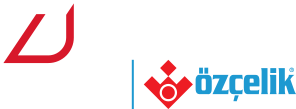CNC Profile Machining Center: High-Precision Processing for Aluminum and PVC Profiles
A CNC Profile Machining Center is one of the most advanced manufacturing solutions used in aluminum, PVC, and light alloy profile processing. Designed to maximize productivity, precision, and consistency, these centers perform multiple operations such as milling, drilling, cutting, slotting, and routing—fully automatically and with minimal operator intervention. Today, CNC machining centers have become essential in industries like window and door manufacturing, façade systems, automotive, furniture, and industrial aluminum production.
In this article, we will explore what a CNC Profile Machining Center is, how it works, its key advantages, and why it plays a crucial role in modern manufacturing environments.
What Is a CNC Profile Machining Center?
A CNC Profile Machining Center is a computer-controlled machine that processes long aluminum or PVC profiles using multiple servo axes. With its automatic tool-changing system, strong spindle motor, and advanced software interface, the machine can handle complex operations with high accuracy.
CNC machining centers can include 3-axis, 4-axis, 5-axis, or even multi-axis configurations depending on the production needs. Higher axis numbers allow angular and multi-surface machining, making the machine ideal for complex projects requiring advanced geometry.
How Does a CNC Profile Machining Center Work?
The operation begins by placing the aluminum or PVC profile on the machine’s clamps. The operator then loads the machining program, which can be imported through CAD/CAM software or selected from the machine’s internal library.
The basic workflow includes:
Automatic profile clamping and positioning
Servo-controlled movement of the spindle unit
Execution of programmed cutting, drilling, milling, or slotting
Automatic tool change when needed
Completion of machining and unloading of the profile
Thanks to full CNC control, the machine executes every operation with micrometer-level precision and eliminates manual errors that commonly occur in traditional machining methods.
Key Advantages of CNC Profile Machining Centers
1. High Precision and Repeatability
CNC machining centers operate with exact coordinates, ensuring that every profile is processed uniformly. This guarantees accuracy in mass production and reduces faulty output.
2. Multi-Function Capability
A single CNC Profile Machining Center can replace multiple manual machines by combining tasks such as:
Milling
Drilling
Tapping
Copy-routing
End milling
Cutting
Slotting
This reduces workspace needs and lowers investment costs.
3. Increased Productivity
The automatic tool change system, servo-controlled motion, and fast spindle speeds significantly shorten production time. Operators can process large quantities of profiles with minimal effort.
4. Reduced Labor Costs
Since the machine performs all operations automatically, fewer operators are needed on the production line. This also improves safety by minimizing manual contact with cutting tools.
5. Advanced Software Integration
Modern CNC machining centers come with user-friendly interfaces, CAD/CAM compatibility, and remote diagnostics. Manufacturers can easily import 3D models, optimize cutting paths, and monitor production in real time.
Where Are CNC Profile Machining Centers Used?
CNC Profile Machining Centers are widely used in industries requiring precise profile processing, including:
Aluminum window and door manufacturing
Curtain wall and façade systems
PVC profile processing
Automotive and transportation
Solar energy panel frames
Furniture and interior architecture
Industrial machinery components
Because they can handle complex shapes and custom designs, they are ideal for both mass production and special projects.
Why Should Manufacturers Invest in a CNC Profile Machining Center?
Investing in a CNC Profile Machining Center significantly increases a company’s competitive advantage. The machine not only improves product quality but also reduces long-term operational costs. Its automated structure boosts production speed, enhances safety, and delivers consistent, high-quality results across every profile processed.
